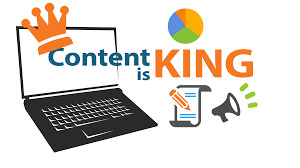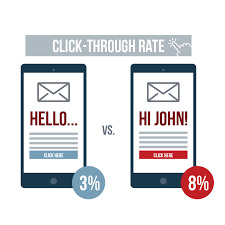Don't wanna be here? Send us removal request.
Text
Best Practice Digital Marketing
In this post I will be focusing on streamlining and planning the most effective digital marketing campaigns by understanding the importance of correctly planning implrmenting your digital marketing activities using the top 5 industry best practice guideline.
As digital marketing continues to evolve and increase in use it can be difficult to untangle clutter and ensure that the desired message is reaching consumers. By applying industry best practice when developing your digital marketing plan, you are ensuring that you are maximising your communication reach.

(Bite Magazine, 2017)
As a guide the following basics should be covered off:
1. Audience Targeting Audience targeting is exactly what the name suggests, it is simply defining the target market to identify and understand a particulate niche and how a business can dominate that niche (Newberry, 2018). By defining the target market businesses can better understand who to tailor their communications to and the best platforms to use to communicate with those people.
2. Accurate Data It is highly important to ensure that your data is up-to-date. In one year, it is estimated that between 20% and 30% of email addresses change as people move around (Stirista, 2020). If regular data reviews and updates are not performed, you are compromising the effectiveness of your marketing.
3. Omnichannel Marketing Use a variety of different platforms to communicate your message, but selecting just one method for communication you are potentially missing segments of your target audience as you may not have selected a platform that they use, by using omnichannel marketing you are ensuring that your message has a better chance of reaching those who you want to communicate with.
4. Content Consider how your target audience will view/access your communications and make sure that you adjust your communication for that platform. Content should always be easy to read, relevant, creditable and accurate (Stirista, 2020).
5. Performance Measurement Analytics Measuring marketing performance using analytics allows you gauge the success of your marketing activities (Nabler Marketing, 2016). By analysing marketing activities, this allows you to assess what methods performed best, what can be improved and what can be changed to better convey your message for future campaigns (Nabler Marketing, 2016).
0 notes
Text
Top Trends for Digital Marketing in 2020
Digital marketing continues to strengthen year after year and while 2020 maybe a very different to other years in some respects, digital marketing is still growing and continuing to strengthen. In this post we will be exploring the top trends of digital marketing and their importance is an ever growing and virtual/digital world.
1. Facebook

(Hotelogix, 2017
Although Facebook does not have the monopoly that it once had in the social media world, it is still a powerful platform. Forbesstates that Facebook is the most popular social media platform for over 65’s in America (Hills, 2018). For marketers, it is important to define their target audience and what social media platforms they access. For younger generations, platforms such as Instagram, Snapshat and TicTok are more widely used (DMI Blog, 2019)
2. Instagram

(Makkar, 2020)
Instagram is hugely popular with users under 30 and is one of the most rapidly growing social media platforms, hitting over one billion users (DMI Blog, 2019)
3. Chatbots

(Goddard, 2018)
Chatbots are increasing in popularity as more and more businesses use them as messaging applications to communicate with their customers. Chatbots combine artificial intelligence (AI) and natural language processing (NLP), that allow business to automate their customer service delivered by their websites (Newlands, 2017).
4. Video

(Arevalo, 2017)
With increasing numbers of consumers viewing advertising and marketing, video marketing is becoming the go. One of the latest trends in video marketing is live stream, this is an effective form of marketing that is highly engaging and can be nicely dovetailed with influencer marketing. Statics from ImpactBNDshow that:
- 70% of consumers have shared a brand’s video;
- 52% of consumers claim that watching product videos makes them more confident and guides their online purchasing decisions; and
- 72% of businesses believe video content has improved their conversion rates (Rinaldi, 2019).
5. Good Content

(Defren, 2015)
The need for good content is never going to change. All forms of marketing need to deliver their intended message to encourage them to purchase a particular produce over another one (Vividus, 2017). If a business fails to deliver their message in an effective and meaningful way due to poor content, they face failing to meet their marketing goals and objectives.
6. Personalised Email

(Sana Editorial Team, 2016)
While email marketing may not be a new trend, the way in which marketers use email marketing is developing all the time. The latest trend in email marketing is the increase move away from generic emails to more personalised emails. It is proven that personalised emails drive the highest engagement and return on investment (Campaign Monitor, n.d.)
7. Omnichannel Marketing - is defined as a multichannel sales approach that provides customers with an integrated shopping experience. The trend aims to provide customers with a seamless experience regardless of how they choose to shop - online or store (Becker, 2016). One of the most famous examples of this style of marketing is Apple. Appleunifies their customer experience across each of their platforms. When customers go into a brick-and-mortar store, Apple demonstrates how it feels to use their products. Customers can also easily research their products online, then come to the store to experience the products before buying them. Apple’s branding is consistent across each of their channels, their products and marketing are instantly recognizable by their customers (OroCommerce, n.d).

(Munipally, 2017)
1 note
·
View note
Text
Digital Marketing Communications
Digital Marketing Explained
In this post I thought that it would be a good idea to go back to basics and understand what digital marketing comprises of to give everyone a comprehensive understanding of this increasingly important aspect of marketing in a digital world.
Firstly, it is important to understand the definition of marketing and the traditional avenues of how businesses/companies communicate and engage with their target audience.
Marketing is the process of researching, promoting, selling and distributing products and services (Lexico, n.d.).
Traditional marketing is a broad category that comprises of many forms of advertising and marketing including:
print;
broadcast;
direct mail; and
telephone.

(Sherman, 2019)
“88% of the US owns a mobile device, and 25% of mobile users ONLY access the web from their phone”. (Preston, n.d.). Given that statistic, it is unsurprising the shift from traditional forms of marketing to digital marketing which with each year continues to grow.
Digital marketing, in the simplest definition, refers to the management of different types of online/digital presence which includes:
websites;
mobile apps;
social media pages;
search engine marketing;
social media marketing;
online advertising;
e-mail marketing; and
partnerships/sponsorship arrangements (Chaffey, 2020).
When managing digital marketing it is important to keep in mind how the audience or target market will respond and interact with your communications and understand the 5 D’s of digital marketing, which comprise of:
Digital devices – smartphones, tables, PC’s and TV’s.
Digital platforms – Facebook, Twitter, Instagram, Google, LinkedIn and YouTube.
Digital media – email, search engines and social media.
Digital data – information collected by organisations about their audience.
Digital technology – software or platforms that are uses by businesses to create content.

(Disha, 2020)
With any type of marketing that is planned to be undertaken, it is highly recommended that a marketing strategy be developed and implemented. Essentially, a marketing strategy is a plan for reaching a specific goal/s and it focused on what actions are needed to achieve those (Hudson, n.d.). A marketing plan will look at what a business is currently doing well, what’s missing and what can be done to achieve the set goal/objective.
Just like traditional marketing, digital marketing also requires a strategy to be developed that helps businesses achieve specific digital goals through carefully selected online marketing channels such as paid, earned, and owned media (Hudson, n.d.) – this essentially ensures that the business manages its time and resources in the most advantageous ways to achieve its objectives.
1 note
·
View note